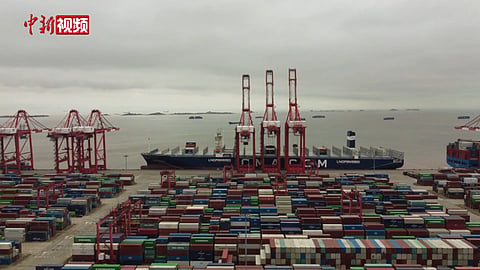

Starting October 14, 2025, China will charge American-owned or operated ships, those built in the U.S., or flying the U.S. flag a fee of 400 yuan ($56) per net ton per voyage, with a cap of five voyages per year.
This mirrors U.S. plans to impose $50 per net ton fees on Chinese vessels docking in American ports, effective the same day.
Both nations’ fees are set to increase annually through 2028, when China’s will reach 1,120 yuan ($157) per net ton.
China’s Ministry of Transport described the fees as countermeasures to “wrongful” U.S. practices, specifically targeting the planned U.S. port fees on Chinese ships.
Beijing’s commerce ministry called the U.S. fees discriminatory, arguing they harm China’s shipping industry and disrupt global supply chains.
The Chinese measures aim to safeguard fairness in shipping and shipbuilding markets.
This move follows other Chinese trade restrictions, including curbs on rare earths and lithium battery equipment exports, ahead of anticipated talks between U.S. President Donald Trump and Chinese leader Xi Jinping at the Asia-Pacific Economic Cooperation forum in South Korea.
The reciprocal fees add complexity to global trade networks, potentially increasing costs for exporters and consumers.
China, the world’s leading shipbuilder with over 1,000 commercial vessels constructed last year, contrasts sharply with the U.S., which built fewer than 10.
While the U.S. fees could cost top carriers up to $3.2 billion annually, China’s fees may have a lesser impact due to the smaller U.S. fleet.
However, the measures risk further straining U.S.-China trade relations, already tense after recent tariff escalations and a pause in agricultural imports.
As both nations prepare for trade talks, these fees underscore ongoing challenges in resolving economic disputes.